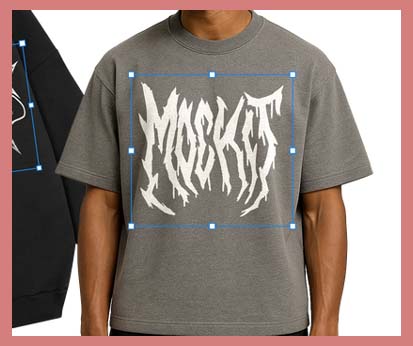
From Idea to Visual in Minutes
Mockup generators convert raw concepts into shareable visuals fast. Drop in artwork, select a surface or device and preview scale, placement and color interactions instantly. Speed matters when feedback cycles are tight; quick visuals unlock faster approvals and keep projects moving without waiting for photography.
Faster Iteration, Fewer Reworks
Because changes are non-destructive, you can test multiple colorways, crops and placements in one session. Side-by-side comparisons expose weak treatments. By validating options before production, teams cut avoidable revisions, reduce file churn and protect timelines—especially on campaigns with many SKUs or seasonal refreshes.
Realistic Context for Better Decisions
Good generators simulate fabric drape, material glare and environmental lighting. Seeing a design on a folded tee, matte box, or phone case reveals legibility issues that a flat artboard hides. Real context supports accurate calls on ink density, line weight and whitespace so the final product matches intent.
Consistency Across Brands and Channels
Templates standardize margins, grid positions and safe areas. Once rules are set, they can be applied across sizes, layouts and marketplaces. This keeps product pages, pitch decks and ads aligned, reducing brand drift. Consistency also helps customers compare variants quickly, lowering confusion and return risk.
Production Alignment and Handoffs
Export options should match downstream needs: transparent PNGs for storefronts, layered files for printers and vector logos where scale matters. Clear notes on underbases, stitch limits, or bleed areas travel with the mockup, giving production teams practical guidance and minimizing misprints or re-shoots.
E-Commerce and Marketing at Scale
A generator can produce full galleries—front, back, detail, lifestyle—without scheduling shoots. Bulk color swaps and text replacements create cohesive sets for launches and A/B tests. Because assets are standardized, analytics compare like with like, letting teams improve thumbnails, angles and copy against measurable outcomes.
Collaboration and Version Control
Shared libraries, locked templates and version histories keep contributors aligned. Stakeholders can annotate approvals directly on visuals rather than in long email threads. Clear ownership of the “latest” file reduces attachment chaos and ensures paid media, web and print teams all publish the same asset.
Selecting the Right Solution
Prioritize high-resolution outputs, realistic textures, controllable lighting, multi-format exports and batch features. Look for responsive scene sizes, ICC profile support and keyboard-driven workflows that save time. When these pieces come together, designers deliver faster, decisions improve and production teams receive assets they can trust.
Cost and Risk Reduction
Fewer test prints and reshoots lower spend. Catching scaling, contrast, or placement issues early prevents write-offs. Realistic previews reduce refunds and support tickets, trimming the hidden costs caused by inconsistent assets across web, ads, packaging and retail displays.
Author Resource:-
Elmon advises people about fashion, clothing and t shirts mockup.






